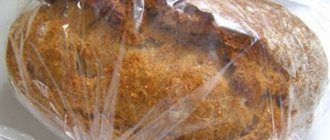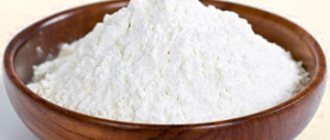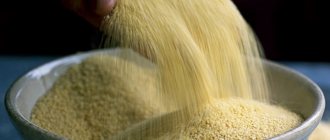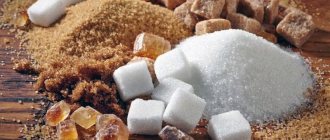What it is?
From the point of view of the law, the shelf life of sour cream is the time period after which the fermented milk product loses its quality and can no longer be consumed. The indicator guarantees: the product is safe for life and health. Naturally, subject to storage conditions.
Reference. In the Russian Federation, sour cream is produced according to the interstate standard GOST 31452-2012. The law regulates its production of a fermented milk product based on cream from cow's milk, packaged in special packaging and intended for food. All other “variations on the theme” of sour cream - sour cream products and substances enriched with other ingredients are not related to the specified GOST.
GOST 31452-2012 does not contain specific information about expiration dates. These time frames MUST be established by manufacturers, guided by the technical regulations of the Law of the Russian Federation “On Technical Regulation” No. 184-FZ of December 27, 2002.
If the buyer receives a product without indicating significant data, the manufacturer is responsible for the safety of the products sold for 10 years from the date of sale. Of course, sour cream with such a long shelf life does not exist in nature, so the marking applied to the packaging protects the manufacturer from unfounded claims from customers.
The shelf life of sour cream is the period of time during which the fermented milk product retains its qualities and characteristics established and described in the relevant regulations (GOST, TU, SanPiN). This indicator ensures that the product is edible.
The shelf life is not the same as the expiration date, since after the first period of time the sour cream is not considered lost, but expired sour milk can no longer be eaten.
Sour cream is a product of bacterial ripening, so acidity and other indicators may change during storage. This is the result of the activity of microorganisms and native enzymes. Since it is difficult to control this process from the outside, fermented milk products may change their taste during storage.
The packaging of ready-made sour cream always indicates the production date - this is the day on which the production process was completed and the freshly prepared sour cream was completely ready for sale.
National standard
The production of sour cream is regulated by GOST 31452-2012.
It is interstate and came into force as a national standard of the Russian Federation on July 1, 2013.
This GOST in clause 3.1 clearly defines “sour cream” - it is a fermented milk product produced by fermenting cream with or without the addition of dairy products using starter microorganisms - lactococci or a mixture of lactococci and thermophilic lactic acid streptococci, the mass fraction of fat in which is at least than 10%.
The document covers a product containing cow's milk cream and carefully packaged.
is not regulated by this standard .
Clause 5.2.1.1 of GOST prohibits the use of stabilizers and thickeners.
The exact shelf life is not specified . This right remains with the issuing company.
The shelf life of butter and sunflower oil is in this article.
Marking
According to the Technical Regulations of the Customs Union No. 022/2011, the manufacturer must indicate on the container the expiration date, as well as the date of manufacture. There are no such instructions in the law regarding storage periods.
Organoleptic properties may change after opening the package.
This may affect the quality and safety of the fermented milk product, so the manufacturer is required to indicate storage conditions on the packaging after the container is unopened.
There is sour cream on sale in individual containers and a so-called “weighted” product - sour cream, which is packaged and weighed by sellers or employees of the outlet:
- in the first case, all mandatory markings are applied to the jar or bag;
- and in the second case, the required data is indicated on the transport packaging - the general container in which the batch of sour milk was delivered.
What is the expiration time for this product?
There are no uniform standards. The expiration date is determined by the manufacturer and/or developer of technical and regulatory documentation. Additionally, storage conditions are indicated. These data are entered into the NTD and agreed upon with the State Sanitary and Epidemiological Service.
The expiration date cannot simply be invented or assigned out of thin air: the specific time period and conditions under which the product is stored must be justified. The safety of the product and the preservation of properties for a specified period are confirmed by comprehensive research. Hygienic studies are carried out in accredited centers of the State Sanitary and Epidemiological Supervision.
Manufacturers reserve some batches of finished sour cream for 3-4 months. This product is stored for up to 3-4 months in large containers at temperatures from 0 to 2⁰C and humidity up to 85%. To prevent the finished product from stratifying, the barrel must be turned over at least once a month.
The implementation period is considered separately.
Products by weight with high fat content (25-30%) in transport packaging, which are stored at a temperature of 2 to 6⁰C, can be sold within 15 days from the date of manufacture.
If sour cream is stored at a temperature of 0 to 2⁰C, the sales period is extended to one and a half months (sour cream with a fat content of 20% under the same conditions can be sold within one month).
The preservation of freshness and high quality of products is also influenced by compliance with production technology, which is described in SanPiN 2.3.4.551-96, a regulatory document regulating the process of manufacturing dairy products (read more about the shelf life of dairy and fermented milk products here). Sour cream is prepared only from fresh pasteurized cream, using the tank method and closed containers.
Bacterial starter is introduced in a strictly defined quantity , and ripening and ripening takes place in a refrigeration chamber at a temperature of 0 to 8⁰C. Sour milk in a large transport container matures within two days, and sour cream poured into small consumer packages matures within 6-12 hours.
Choice
Homemade sour cream from a farmer is considered natural. Such a product will have a creamy aroma, delicate consistency, and high fat content. But the latter property is not entirely suitable for those who are watching their figure. However, there are no additives or preservatives in our own products, which cannot be said about store-bought products.
The stores offer a large assortment. Products differ in fat content, additives and cost. Before fermentation, the cream is brought to the required fat content. Calorie content does not always indicate naturalness, that is, 12% sour cream will be suitable. Whatever the fat content, the product should not be liquid. A sign of quality is a uniform consistency. If there are grains, then the manufacturing technology was violated or the storage conditions were inappropriate.
But even if the consistency is good, this is not an indicator of naturalness. To improve it, manufacturers often add stabilizers and thickeners to their products. Stores also sell sour cream products that contain a plant base - palm oil. Nutritionists do not recommend consuming something like this.
You should take into account the prefix “bio” in the name. It indicates that sour cream is enriched with bifidobacteria and probiotics. These substances are considered beneficial for digestion. All information about the composition and storage must be on the packaging
It is important that the GOST marking is present, as this indicates naturalness and compliance with the preparation technology. If the product is manufactured according to technical specifications, then sour cream does not necessarily have a harmful composition
Probably, classic sour cream was diluted with additives, for example, bifidobacteria. Remember that it is important to choose this dairy treat carefully, as well as follow the rules for storing it.
How long can I store in an open package?
A sealed container provides sour cream with protection from the influence of the external environment and inhibits the proliferation of pathogenic microorganisms, therefore, subject to storage conditions, unopened packaging can be stored until the expiration date. How long can dairy products be stored and how after opening the package, including in the refrigerator?
- At a temperature no higher than 6⁰C, sour cream in small containers is stored for no more than three days, and the dietary product “lives” even less - 48 hours.
- At room temperature, sour cream spoils within a day.
- Sour cream with stabilizers that has undergone additional heat treatment can be stored for 7 to 14 days if the recommended temperature conditions are observed.
- Bought a jar of homemade product? You have 1 to 3 days left to empty the container.
- Sour milk with preservatives and special additives “lives” the longest on the refrigerator shelf. Nothing will happen to such sour cream for a week or even two.
To increase the shelf life of sour cream, a natural preservative – nizaplin – is used.
The treat may turn sour or rancid before the last expiration date. For example, due to long-term storage in inappropriate conditions (outside the refrigerator), or careless use (if sour cream is eaten from the package or taken out with a dirty spoon).
How to determine freshness?
Dairy products are considered a perishable product and sensitive to storage conditions, so it is important to be able to determine the freshness of sour cream when purchasing and at home. External characteristics and taste are considered critical indicators.
GOST regulates appearance, consistency, taste and aroma, as well as color. Fresh sour cream is a homogeneous thick mass. The surface of the product should be shiny. Low-fat varieties may be thinner and slightly viscous, and may also contain grains.
The aroma of a quality product is clean and characteristic of fermented milk products. The presence of foreign tastes and odors unusual for sour cream is unacceptable. The color of a good product is white with a slight creamy tint, uniform.
It’s impossible to figure out physical and chemical indicators offhand, but such indicators are monitored by government services. The rest can be assessed at the time of purchase.
Determining the quality of sour cream in individual consumer packaging presents a certain difficulty. If the glass or jar is opaque, then even the appearance cannot be assessed, not to mention the taste or smell. There is only one option here: analyze the content after purchase. We definitely do not recommend buying sour cream with a swollen lid or in damaged packaging.
Signs of corruption
- Sharp sour taste.
- Bitterness in taste.
- Putrid or moldy taste.
- Musty smell.
- Pronounced food taste.
- Distinct taste of containers.
- Separated whey.
- Heterogeneous consistency.
- Uncharacteristic color.
Is it possible to return a low-quality product?
The product belongs to the category of food products.
According to Article 18 of the Law “OZPP”, you can return sour cream of inadequate quality - spoiled, with uncharacteristic organoleptic characteristics, expired.
If everything is in order with the purchased fermented milk, you cannot simply “change your mind” - high-quality food cannot be returned.
Types of sour cream
According to GOST, sour cream is produced from normalized cream, reconstituted cream, recombined cream and their mixtures. In any case, sour cream is always just cream and sourdough.
The natural product has a white or slightly cream color and a glossy surface. For a product with a fat content of 10-20%, a not entirely thick, slightly viscous consistency with a slight graininess is allowed.
When purchasing, pay attention to the labeling; it must contain the word “sour cream”, without distorting the form, that is, not “sour cream” or “smetanushka”. Most often, when purchasing, we pay attention to the fat content.
Most often, when purchasing, we pay attention to the fat content.
Sour cream can be:
- Low fat: 10, 12, 14%;
- Low fat: 15, 17, 19%;
- Classic: 20, 22, 25, 28, 30, 32, 34%;
- Fat: 35, 37, 40, 42, 45, 48%;
- High fat: 50, 52, 55, 58%.
Most often we find on the shelves a product with a fat content of 10 to 25%.
Storage rules at home
- According to clause 8 of GOST 31452-2012, sour cream should be stored at a temperature from 2⁰С to 6⁰С. In everyday life, this temperature regime is ensured in a refrigerator.
- The product retains its quality until the expiration date indicated on the individual or transport packaging.
- It is not recommended to leave the packaging at room temperature for a long time: this will reduce the shelf life to 24 hours.
- Do not freeze sour cream, otherwise grains will appear in the mass and the taste will change.
- If you do not plan to use the entire amount of the product at once, use a clean, dry spoon each time: moisture or food contaminants getting into the mass will cause the proliferation of pathogenic bacteria.
- Try not to shake the product container during transportation or in everyday situations, as whey may be released.
- Sour cream “loves” glass and ceramics, but the product in plastic deteriorates faster.
To avoid eating spoiled products, it is important before purchasing to make sure that the product is displayed in the store in accordance with the storage rules established by the manufacturer, assess the integrity of the packaging and expiration date. Our experts have prepared a series of articles from which you will learn about the storage rules and shelf life of dairy and fermented milk products: fresh and powdered milk, yogurt, butter, condensed milk, ice cream, kefir and cottage cheese.
Can it be frozen?
For many products, freezing greatly increases the viability, and often it has a positive effect on preserving and even increasing the amount of vitamins. But this does not apply .
Storing dairy delicacies in the freezer will not bring anything good : the delicate texture will be spoiled, which will affect the taste, and beneficial bacteria do not tolerate very low temperatures.
You don’t need and don’t want to eat such a product.
Is it possible to eat if time is up?
Sanitary standards prohibit the sale of expired products, since eating spoiled food threatens health and life. If day “x” has arrived and the jar is not empty, you cannot season borscht or salad with such sour cream - this is a direct path to eating disorders and poisoning. Should the contents of the package be thrown into the trash?
By and large - yes. It's better not to take risks. However, some housewives use expired milk: add it to baked goods or prepare sour cream sauces. You can't do without heat treatment. And even in such cases, you should make sure that sour cream is not dangerous. It is unacceptable to use a product with mold, a putrid odor or an unpleasant color. Even high temperature cannot cope with such defects.
Everyone who eats and purchases sour cream needs to understand the intricacies of storage and signs of freshness. A fresh product will enrich the menu and saturate the body with essential substances, while expired fermented milk products threaten health.
If you find an error, please select a piece of text and press Ctrl+Enter.
Determining the delay
For the safety of your health, you should not consume expired products, since they contain pathogenic microbes . Therefore, it is important to understand how to determine the freshness of a dairy treat.
Here are some signs of an unsuitable product:
- the presence of mold is the most obvious of them;
- color change;
- bad smell;
- texture separation , serum release.
The presence of only the last factor does not always indicate depravity, but foreshadows it.











